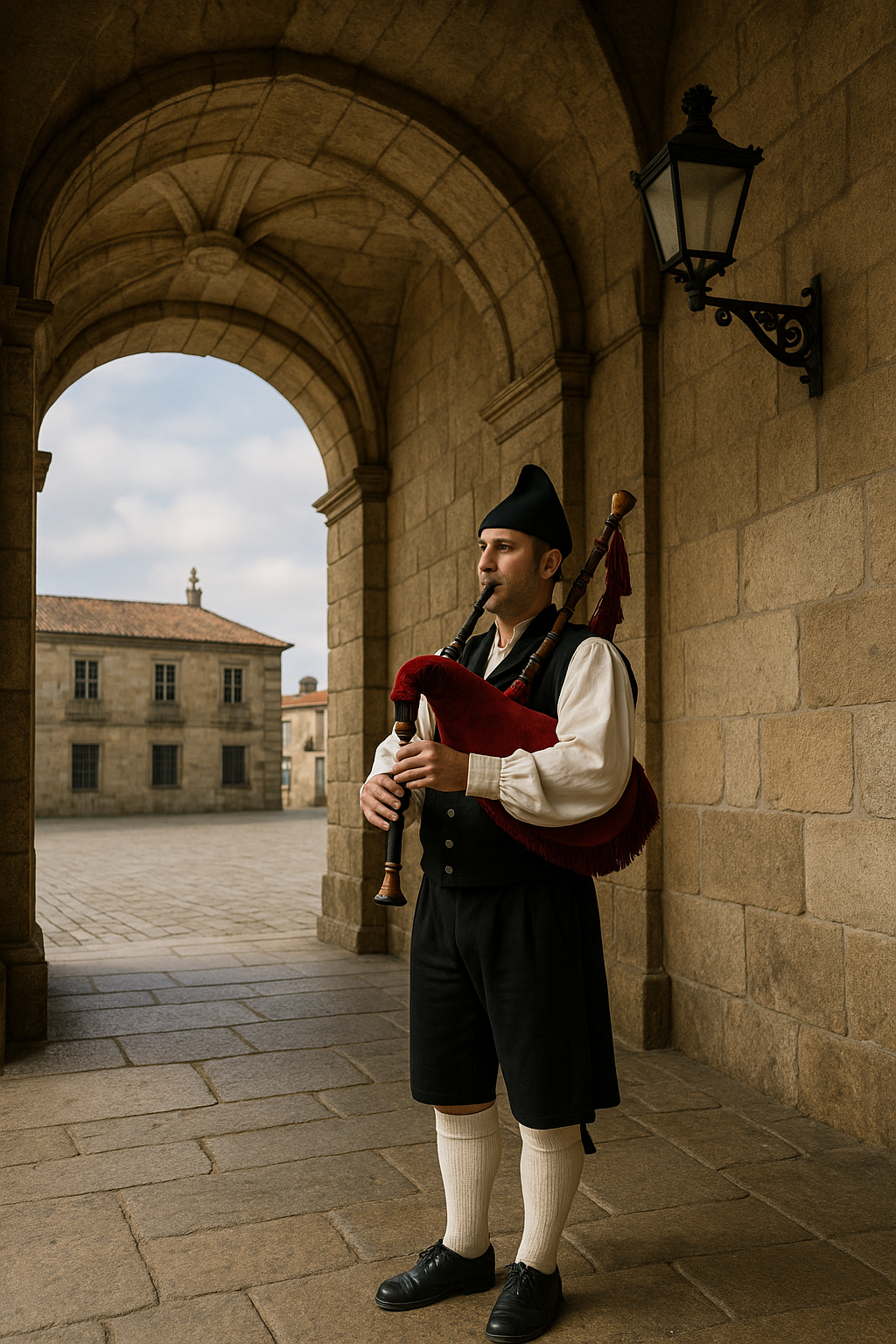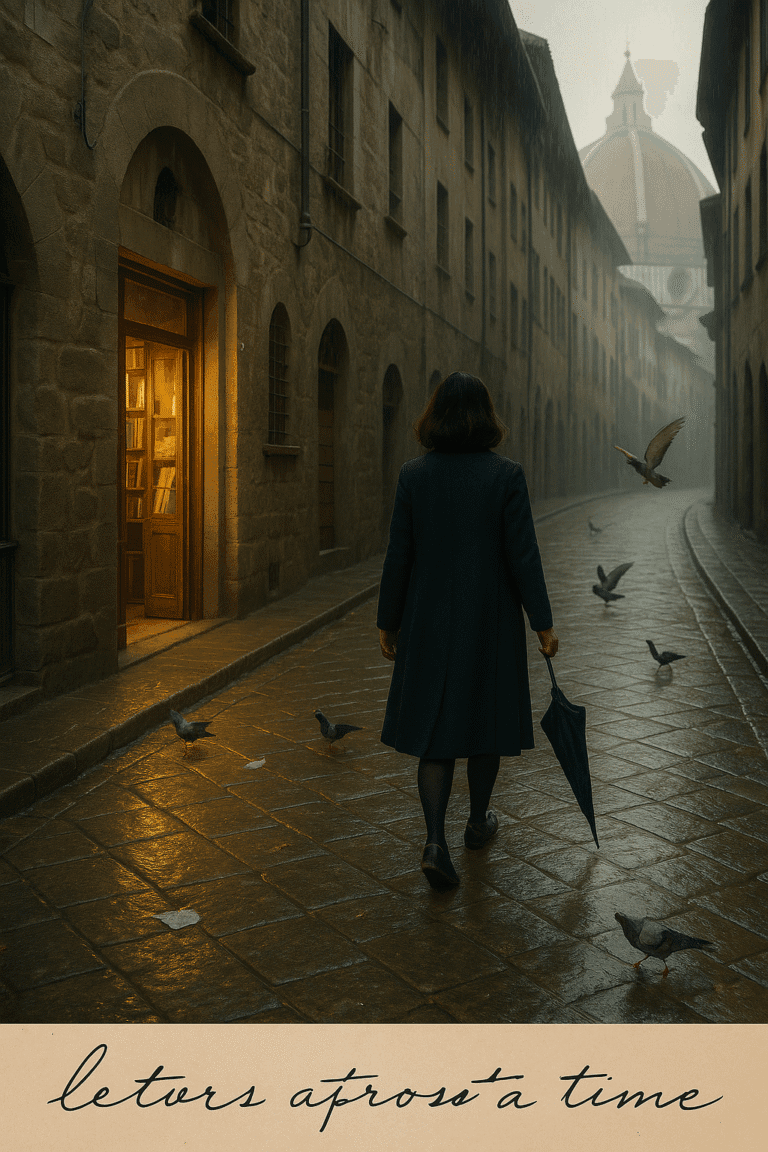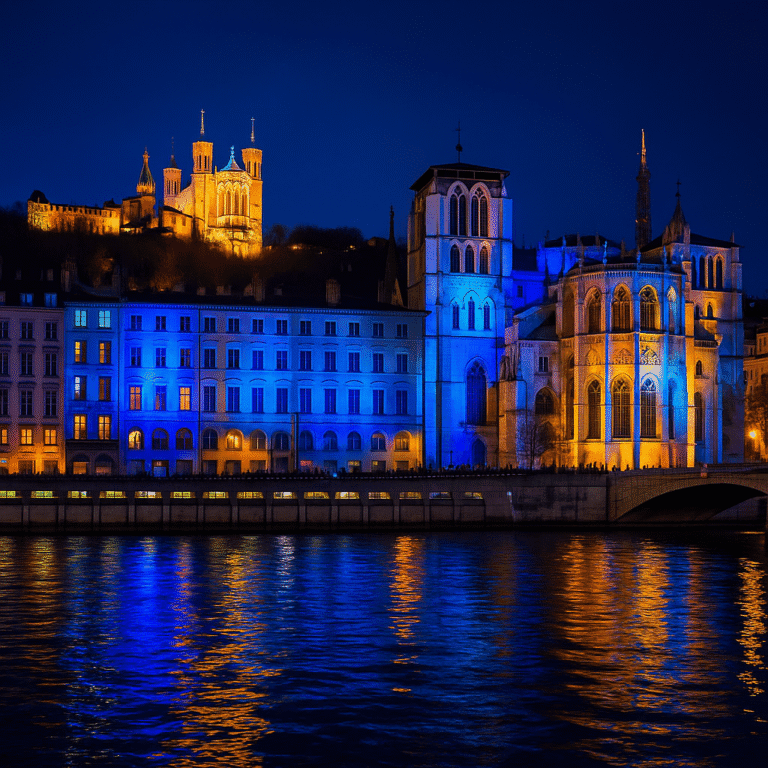Santiago de Compostela
🌿 Celts, bagpipes, and witches: the ancient soul among the stones
Where the stone keeps secrets, and the bagpipe sings them to the wind

I arrived in Santiago many years ago, formally pursuing a postgraduate degree, and with my heart ready to be surprised. Galicia was unfamiliar to me. I had never set foot on its land, tasted its bread, or looked its people in the eye. But something about its name—Santiago, Compostela, Celta—already sounded like a spell.
A walk through the old town was enough to know I had fallen under a spell. It's not just any old city. The stone buildings, worn and damp, seem to whisper in low Galician. Cobbled streets wind with a secret logic, as if only the city knew where each turn leadsThere are corners where one might come across a pilgrim... or a witch.
And then, the bagpipes.
I didn't know it sounded like that in Galicia. I didn't know that this musical relative of the Scottish bagpipe existed. But one day, turning down a random street, I heard it. I closed my eyes and couldn't tell if I was in Galicia, Ireland, or in another era. The sound of the Galician bagpipe is sweet, nostalgic, and somewhat hypnotic. As if someone from another time were calling you.
It was there that I learned about Galicia's Celtic heritage, about its mysterious connection to Ireland and Scotland. They say there's an ancient path that connects the two lands, more spiritual than geographical. They say myths aren't just told, they're walked.
I was lucky enough to be there in July, for the Feast of the Apostle James, the 25th. But the night before, the July 24, I experienced one of the most overwhelming spectacles of my life, the Obradoiro Square overflowing with people, excitement in the air, and suddenly… the sky exploded. Fireworks, projections on the Baroque facade of the cathedral, immersive music. A play of light and shadow that seemed to celebrate the gods, the ancestors, and the pilgrims all at once. I'd never seen anything so beautiful. It was like being in the midst of a mystical revelation, redolent of gunpowder and applause.
And of course, the cathedral.
The Santiago Cathedral needs no introduction, but reverence. Vast, majestic, mother of all roads. There I first saw the incense burner fly through the air, that giant censer that swings like a sacred pendulum throughout the nave. A curious detail that I learned: its origin was much more practical than I imagined. The botafumeiro served to disguise the smell of pilgrims, who after weeks or months of walking, arrived at the cathedral… quite human. The mixture of incense, smoke, and devotion still floats in the air.
My fondest memories aren't great feats. They're chords, aromas, gestures. The light, unobtrusive rain. The octopus a feira (a traditional Spanish dish). The Galician of my grandparents in the bars. The unexpected singing of a group of students in period costume crossing the square singing ballads. The University Tuna Santiago—there's the name I was missing—with its black capes and guitars, seemed straight out of another century. And you didn't know whether to laugh, dance, or stay silent in case the moment was broken.
One night, while my group and I were having dinner at a small bar, we heard an open-air concert in the distance. It was Van Gogh's Ear Playing in Santiago. Those were the days... those kinds of moments that aren't planned, but that stay with you like a gentle tattoo.
Oh, and one final detail I'll never forget: my entry into Santiago was through the Lavacolla Airport. That name alone already seemed like something out of a novel to me. But it turns out that “Lavacolla” comes from the ancient habit of pilgrims washing in the nearby stream before entering the sacred cityThe original name referred, without too much fuss, to personal hygiene in a specific part of the body... and although it has softened over the centuries, the Galician folk spirit never loses its direct touch, somewhere between the mythical and the earthly.
Santiago is not explored, it is entered.
Because There are places that are not discovered by walking, but by feeling.






